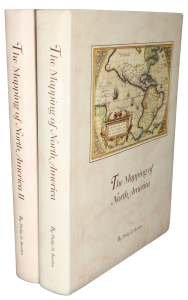Rare Maps and Prints
- World & Celestial
- North America
- West Indies, South & Central America
- British Isles
- British Isles
- English counties
- Large-scale
- Bedfordshire
- Berkshire
- Buckinghamshire
- Cambridgeshire
- Cheshire
- Cornwall
- Cumberland
- Derbyshire
- Devon
- Dorset
- Durham
- Essex
- Gloucestershire
- Hampshire
- Herefordshire
- Hertfordshire
- Huntingdonshire
- Islands
- Kent
- Lancashire
- Leicestershire
- Lincolnshire
- Middlesex
- Norfolk
- Northamptonshire
- Northumberland
- Nottinghamshire
- Oxfordshire
- Rutland
- Shropshire
- Somerset
- Staffordshire
- Suffolk
- Surrey
- Sussex
- Warwickshire
- Westmoreland
- Wiltshire
- Worcestershire
- Yorkshire
- Wales
- Scotland
- Ireland
- Western Europe
- Eastern Europe
- Middle East
- Africa
- Asia
- Australasia & Pacific
- Decorative Prints
- Title Pages
Mr. Philip D. Burden
P.O. Box 863,
Chalfont St. Giles, Bucks HP6 9HD,
UNITED KINGDOM
Tel: +44 (0) 1494 76 33 13
Email: enquiries@caburden.com
The mid-eighteenth century saw the first fresh series of County surveys since those of Saxton carried out in the 1570s. Whilst most of the surveys Jefferys was involved in were produced after 1765, this, the first was published early in his career. Jefferys was baptized in Birmingham which indicates his interest in material relating to the Midlands. His earliest recorded piece was a plan of the city of Worcester in 1742 for John Doharty when he was in his early twenties. Apprenticed to Emanuel Bowen in 1735 he was made free in 1744. Much of his early work was engraving for the ‘Gentleman’s Magazine’. His larger projects at this time usually involved partners to allay some of the costs and risks. This large scale map of Staffordshire was issued in partnership with the local publisher Samuel Parsons of Newcastle, Staffordshire and John Bowles the successful publisher in London. It was first issued in 1747 and engraved by Jefferys whilst still in his twenties. Parsons quite possibly was aware of the local born engraver Jefferys and employed him to produce this work. To share the in expense he sought the partnership of the successful London publisher John Bowles. Further finance was undoubtedly raised by subscription, the map being decorated with the coats of arms of 117 landed gentry. These are numbered to 113 but included 3 presumably late additions unnumbered and one duplicate (no. 48).
The map is dedicated by Parsons to the Right Honourable John Earl Gower upper left in a fine baroque cartouche. A further ornate cartouche upper right encloses an Explanation. It differentiates cities and Bishops Seats from market towns and villages. The Explanation continues lower left below the title illustrating the florid key letters for the Hundreds. Navigable rivers are highlighted as are the Roman roads of ‘Ikenild’ (Icknield) and Streetway. The towns are interestingly marked on the map with relatively large images of numerous buildings. The map was the work of Thomas Jefferys clearly indicated by the delightful image lower right of him sitting at a table with various surveyors tools to hand and is derived from that of Robert Plot published in 1682. . Panels below list the Hundreds and their respective ‘Constablewicks’, the towns with their markets and fairs along with the markets and fairs in nearby major towns just beyond the county borders. The map is engraved on a scale of two thirds of an inch to the mile. It is a fine attractive early large scale map, one of only 27 that pre-date 1750. Despite the fact that Rodgers records examples at the British Library, Cambridge University Library and National Library of Scotland and the latter could be found on Copac. The British Library example is not listed in their online catalogue. Harley, J. B. (1966) ‘The bankruptcy of Thomas Jefferys: an episode in the economic history of eighteenth century map-making’, in ‘Imago Mundi’ XX pp. 27-48; King (1988) 28; Pedley (1986); Rodger (1972) 404; Tooley (1999-2004); Worms & Baynton-Williams (2011).
A Map of the County of Stafford
SOLD








